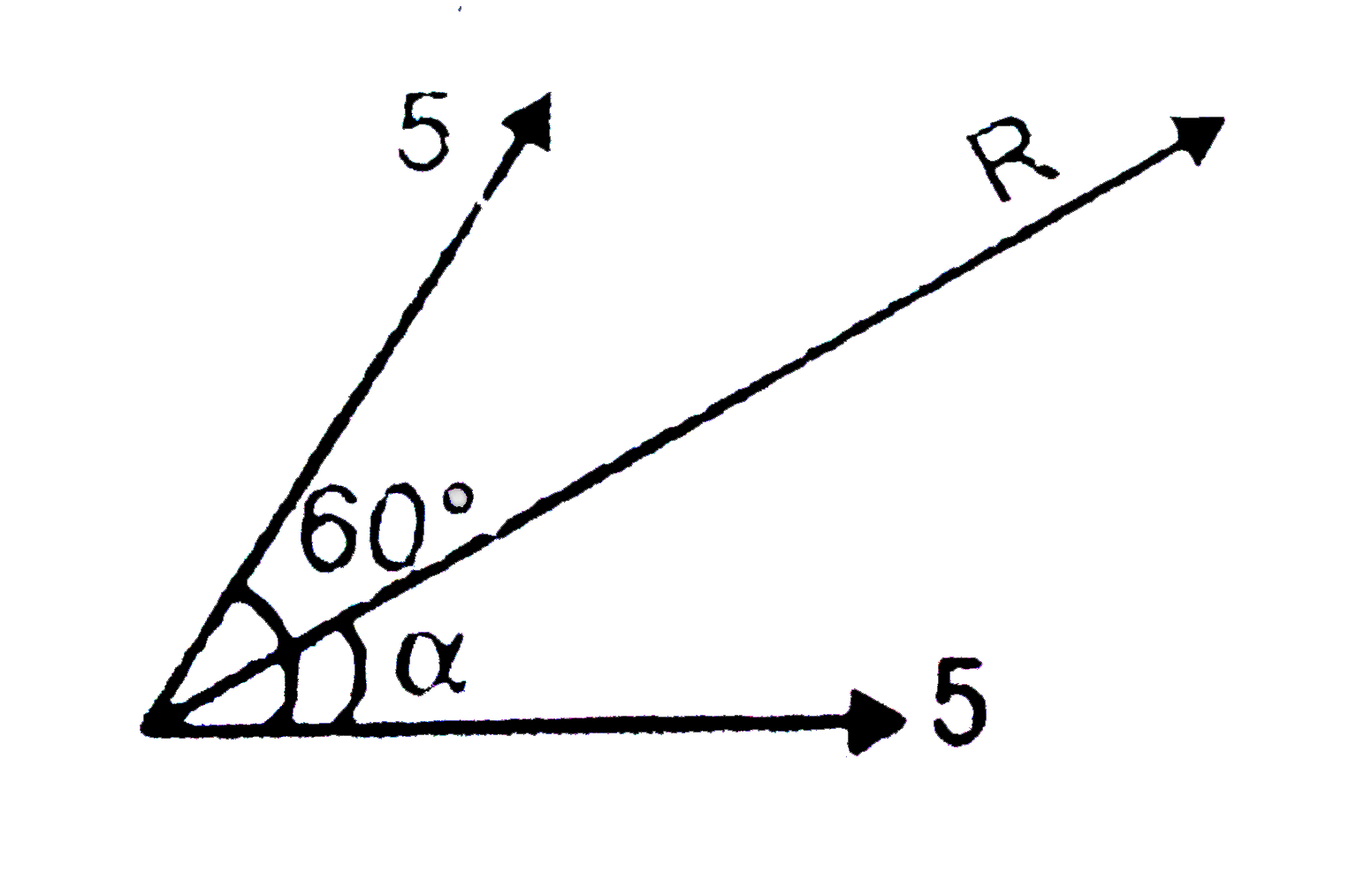If three unit vectors are inclined at an angle of 60∘ with each other, then the magnitude of their resultant vector will be
(a) zero
(b) √6
(c) √3
(d) √9
The correct Answer is:B
To find the magnitude of the resultant vector when three unit vectors are inclined at an angle of 60∘ with each other, we can follow these steps:
Step 1: Understand the Unit Vectors
Let the three unit vectors be →A, →B, and →C. Since they are unit vectors, we have:
|→A|=|→B|=|→C|=1
Step 2: Calculate the Dot Products
Since the vectors are inclined at an angle of 60∘, we can calculate the dot products:
→A⋅→B=|→A||→B|cos(60∘)=1⋅1⋅12=12
Similarly, we have:
→B⋅→C=12and→C⋅→A=12
Step 3: Use the Formula for the Magnitude of the Resultant
The magnitude of the resultant vector →R=→A+→B+→C can be calculated using the formula:
|→R|2=|→A|2+|→B|2+|→C|2+2(→A⋅→B+→B⋅→C+→C⋅→A)
Step 4: Substitute the Values
Substituting the known values:
|→R|2=12+12+12+2(12+12+12)
This simplifies to:
|→R|2=3+2⋅32=3+3=6
Step 5: Calculate the Magnitude
Taking the square root gives us:
|→R|=√6
Final Answer
Thus, the magnitude of the resultant vector is:
√6
---
Let the three unit vectors be →A, →B, and →C. Since they are unit vectors, we have:
|→A|=|→B|=|→C|=1
Since the vectors are inclined at an angle of 60∘, we can calculate the dot products:
→A⋅→B=|→A||→B|cos(60∘)=1⋅1⋅12=12
Similarly, we have:
→B⋅→C=12and→C⋅→A=12
The magnitude of the resultant vector →R=→A+→B+→C can be calculated using the formula:
|→R|2=|→A|2+|→B|2+|→C|2+2(→A⋅→B+→B⋅→C+→C⋅→A)
Substituting the known values:
|→R|2=12+12+12+2(12+12+12)
This simplifies to:
|→R|2=3+2⋅32=3+3=6
Taking the square root gives us:
|→R|=√6
Thus, the magnitude of the resultant vector is:
√6
Similar Questions
The maximum and minimum magnitudes of the resultant of two vectors are 23 units and 7 units respectively. If these two vectors are acting at right angles to each other, the magnitude of their resultant will be
View SolutionThe maximum and minimum magnitudes of the resultant of two vectors are 23 units and 7 units respectively. If these two vectors are acting at right angles to each other, the magnitude of their resultant will be
View SolutionThe maximum and minimum magnitude of the resultant of two given vectors are 17 units and 7 unit respectively. If these two vectors are at right angles to each other, the magnitude of their resultant is
View SolutionTwo vectors having equal magnitude of 5 units, have an angle of 60∘ between them. Find the magnitude of their resultant vector and its angle from one of the vectors.

View SolutionA vector →r is inclined at equal angle to the three axes. If the magnitude of →r is 2√3 find →r
View SolutionTwo unequal vectors are inclined at an angle 30∘. When they are added, the resultant can be :
View SolutionTwo vectors having magnitude 12 and 13 are inclined at and angle45∘ to each other.find their resultant vector.
View SolutionWhen two vectors of magnitudes P and Q are inclined at an angle θ, the magnitudes of their resultant is 2P. When the inclination is changed to 180∘−θ, the magnitudes of the resultant is halved. Find the ratio of P and Q.
View SolutionIf →a and →b are unit vectors inclined at an angle θ, then the value of ∣∣→a−→b∣∣ is
View SolutionThe resultant of two vectors makes an angle of 60∘ with one vector and 30∘ with one other. If the magnitude of resultant is 25, the two vectors are of magnitude
View Solution
